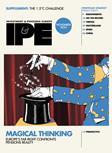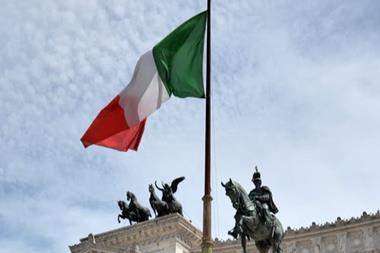NETHERLANDS - The €260bn civil service scheme ABP said it would stick with the core of its strategic investment mix - which includes a 50% securities allocation - for the long term.
However, in light of the euro-zone crisis, it has increased its government-bond allocation to Germany, the Netherlands and France, mainly at the expense of Italy, according to its annual report for 2011.
However, ABP also said it increased the allocation to Spanish government paper to 2.3% of its fixed income portfolio, in order to benefit from the high yield.
The pension fund added that it had also temporarily lowered its currency hedge on dollar investments from 80% to 70%, to reduce its exposure to the euro risk.
ABP reported an annual return of 3.3%, which it said was largely due to its 25% hedge of the interest risk on its liabilities.
However, chairman Henk Brouwer stressed that his scheme was not considering raising the interest hedge, as the pension fund wants to be able to benefit from the expected rate increase.
“With a full hedge, a sudden strong rise of inflation and market rates cannot be countered,” he said.
ABP saw its coverage ratio drop to 94% in April, on the back of falling long-term interest rates, the criterion for accounting liabilities.
Commenting on this development, Brouwer said recent rate cuts had increased concerns about the likelihood of future rights cuts, adding that he would not rule out further cuts in 2014 if the scheme’s funding failed to improve.
Currently, ABP is expecting a 0.5% discount of pension rights in 2013, in order to recover its funding to the required minimum of 105%.
The civil service scheme has also raised the temporary recovery levy from 1% to 3% of the pensionable salary.
Brouwer pointed out the any additional measures would depend mainly on developments in the financial markets, as well as on a new discount rate, which is expected to be announced by social affairs’ minister Henk Kamp as part of an elaboration of last year’s Pensions Agreement.
Brouwer said he hoped Kamp’s proposals would not recommend a “stacking” of security measures, “as these might come at the expense of the pensions contract”.
ABP’s return on investment was largely flat, with its allocation to developed market equity and emerging market equity returning -3.7% and -16.1%, respectively, while its holdings in government bonds returned 3.4%.
It reported returns of -0.6%, 6.5% and 4.8% for its investments in inflation-linked bonds, credits and alternatives against inflation.
The scheme’s opportunities fund - consisting of convertible bonds, music rights and catastrophe bonds - returned 3.5%, while commodities, infrastructure and hedge funds generated 6.1%, 9.6% and 7.7%, respectively.
ABP said its asset management costs - including performance fees - were 0.64% of its assets under management, whereas pension admin costs were 86 euro per participant.
The pension fund provides pensions to more than 2.8m participants.












No comments yet